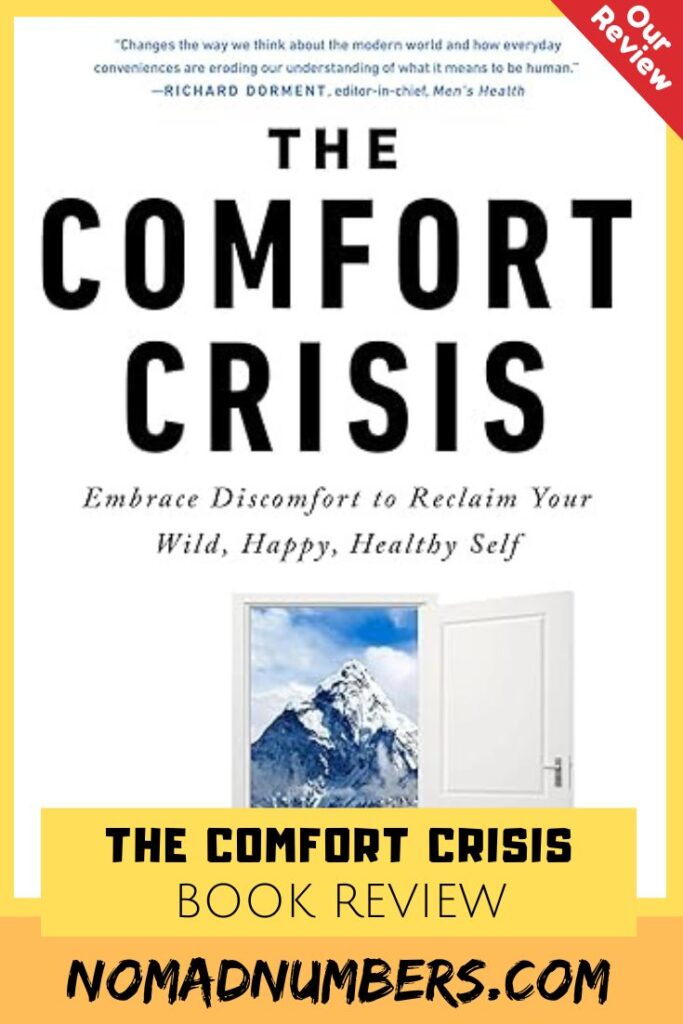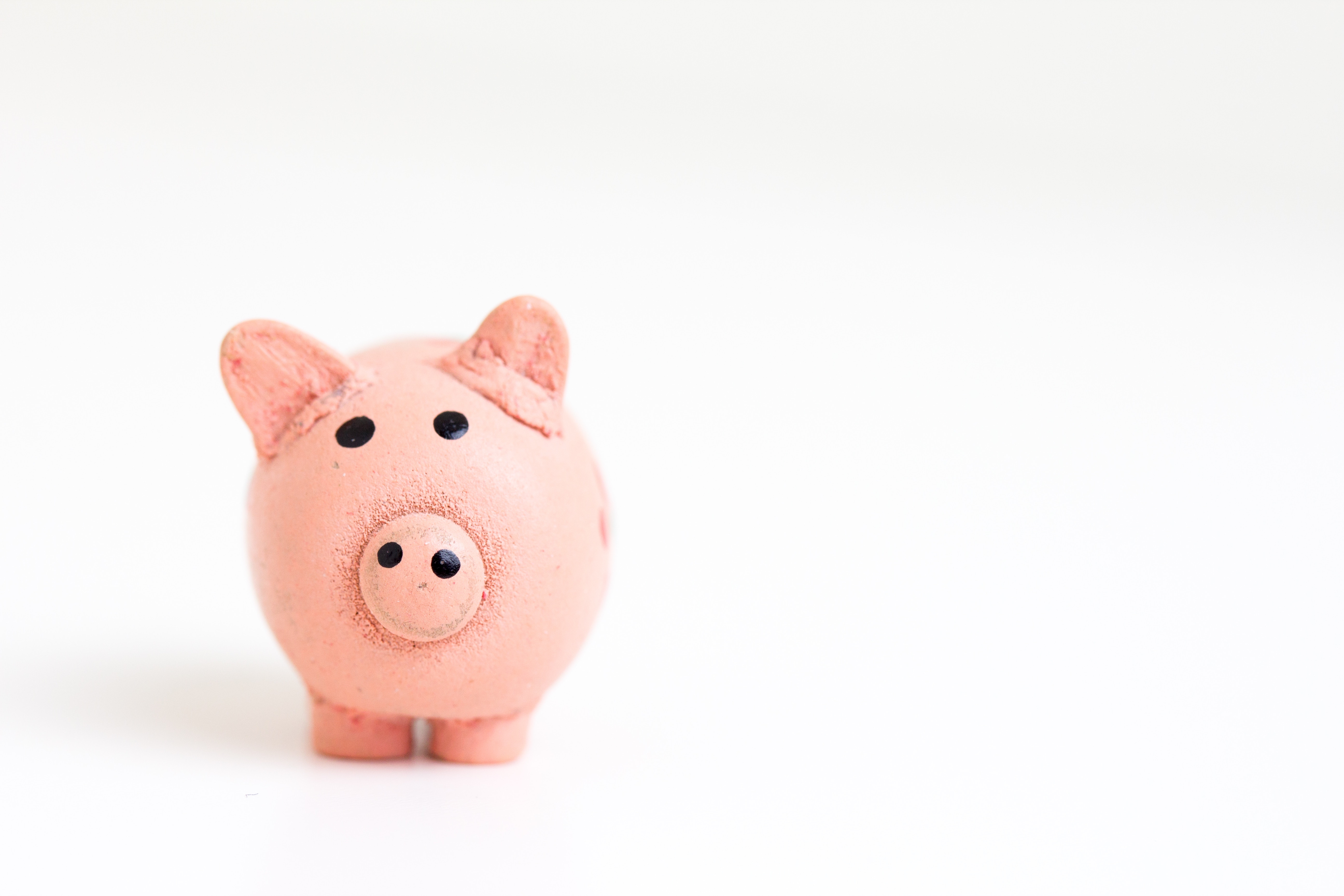We love to travel, but we also prioritize our health. One of my favorite health podcast hosts, Peter Attia, recommended The Comfort Crisis by Michael Easter, a journalist and adventurer who contributes to Men’s Health magazine. I finally finished it, and it did not disappoint! Easter puts together personal stories and interviews with different individuals, highlighting how the comforts we’ve introduced into our lives paradoxically lead to physical and mental stagnation. The key takeaway? We should continually push ourselves outside our comfort zones over extended periods. This is something my wife and I embrace as we explore new countries and lead unconventional lives. Let’s dive deeper into this detailed book review and summary of The Comfort Crisis by Michael Easter.
Some links to the product(s) below are affiliate links, meaning that if you click and purchase any of them, Nomad Numbers may a commission at no additional cost to you. For more information please review our Disclaimer page.
The Comfort Crisis: A Detailed Book Review and Summary
According to The Comfort Crisis, what is wrong with comfort?
In our modern society, we continuously seek comforts that simplify our lives. From the cozy bed we sleep in and the car we drive to work, to the delivery services that bring food and products to our doorstep, and the smartphones we use for hours each day, these conveniences have become essential. However, while it may seem impossible to live without these innovations today (I guess we love to walk and commute everywhere, but we aren’t the average person), they have also contributed to a more sedentary lifestyle than our parents and grand parents experienced, making us lazier and addicted to them.
While these comforts improve our productivity and convenience, they can also lead to reduced physical activity which can then lead to a lot of health and mental issues down the line. By consciously stepping outside our comfort zones, the book reminds us that we can counteract the effects of a sedentary lifestyle and promote overall well-being.
What beneficial discomfort can we bring into our lives?
Through the author’s journey hunting caribou in Alaska, he experiences significant discomfort and reflects on these challenges. He also shares insights from interviews with specialists in various fields after returning home, relating their expertise to his experiences in the wild. Here are the areas of discomfort that he covers:
Boredom
In The Comfort Crisis, Michael Easter argues that experiencing boredom can lead to increased productivity, as it prompts individuals to take a step back and rethink their actions. He illustrates this idea with a story about two prehistoric humans foraging for berries. If one individual focuses solely on the first bush they find and never feels bored, they might work harder and harder to collect berries from that bush. However, if the other individual feels bored and takes a moment to reassess their situation, they may realize that there are other nearby bushes offering easier access to more abundant berries. This shift in perspective not only allows them to gather more food efficiently but also frees up time to seek out additional resources.
Silence
In The Comfort Crisis, Michael Easter emphasizes that our constant exposure to noise and distraction can prevent us from reflecting on our thoughts and emotions. When we embrace silence, we allow ourselves the space to process our experiences, leading to greater self-awareness and clarity. This pause can help us identify what truly matters in our lives, enabling us to make more intentional choices moving forward.
Noise has always been a signal for danger. Back when we lived in caves, the world was mostly quiet. That’s why our heart rates go up when we suddenly hear a loud sound. Today, though, these loud noises usually don’t mean real danger. Instead, they come from noisy machines like fireworks or airplanes.
Food
In The Comfort Crisis, Michael Easter highlights how modern society prioritizes calorie-dense foods (aka junk food) over nutrient-dense options (aka salads/fruits/vegetables). This focus can lead us to eat more without feeling satisfied, ultimately consuming more calories than we need.
Instead of simply cutting junk food from our diets, Easter suggests that we should embrace the discomfort of hunger and be mindful of our choices. By sticking to only eating our daily calorie allowance (over the amount of food), we should easily understand to remove junk food consumption from our eating habits as this will lead to hunger.
Easter also distinguishes between reward foods (those we impulsively crave) and hunger food (which signals our body’s need for nourishment).
Fasting
In The Comfort Crisis, Easter reminds us that early humans ate regularly, but they also experienced extended fasting periods when food was scarce. He explains that intermittent fasting can help the body enter a state of autophagy, which promotes cellular repair and longevity. By practicing intermittent fasting (such as eating within a 6-8 hour window or trying longer fasts) we not only strengthen our bodies but also develop a more mindful relationship with food.
Happiness
Easter highlights that our society’s fixation on constant happiness often leads to superficial fulfillment. By embracing discomfort (whether through challenges, failures, or hardships) we can deepen our emotional experiences. This holistic view of happiness helps us become more resilient and discover joy in both our highs and lows. He also reminds us of the impermanence of everything, suggesting that we not attach ourselves too tightly to people or possessions, as nothing lasts forever.
Additionally, he points out that the top three regrets people often express before they die are: 1) working too much, 2) not living in the moment, and 3) living a life dictated by others’ expectations.
We definitely agree with these three principles that we followed in 2018 when we decided to quit our jobs and start focusing on other priorities, such as health and exploration.
Endurance training
We used to exercise everyday to gather food as well as cover long distances as early humans. While humans can’t run fast, we can run for longer periods of time. Nowadays we barely exercise and if we would like to maximize longevity, we need to do both endurance training as well as high intensity training to improve our physical fitness.
Rucking
We used to carry heavy objects over long distances (food, babies, stones…)! Rucking involves walking with a loaded backpack and is a training method used by the Special Forces. In recent years, it has gained popularity and become more mainstream. By using rucking backpacks like this GoRuck Ruck Plate Carrier (from GoRuck) you access a low-impact exercise similar to walking, but it elevates your heart rate, helping you build both strength and endurance. The author speaks to the founder of the company and highlight many of the benefits, including being a good replacement for people that miss high intensity training and don’t like going to the gym. You can also join a lot of rucking related events through the GoRuck community. Rucking will also make you leaner (if you have too much fat) and build muscle (if you are under muscle).
After reading the book and as an avid hiker, I decided to start experimenting with Rucking for a few weeks as I like the idea of a less impactful activity (over running) that can provide a greater benefit to build on strength.
Gut microbiome
“Dirt is good” is another key message from the book. We live in an over-sanitized world, even though only a few hundred types of bacteria (out of the estimated 5 nonillion—5 x 10²¹—bacteria on Earth) are actually harmful to humans. Allowing bacteria to coexist with us can paradoxically strengthen our immune systems, making us more resilient to diseases.
Healthy eating diverse and fiber-rich food will increase the quality of the microbiome in our gut which affects our day to day functions.
Cold Exposure
Easter discusses how practices like cold showers or ice baths can improve circulation, boost immune function, and enhance mental resilience. By embracing the shock of cold, we can train our bodies and minds to adapt to stress, leading to increased vitality and well-being.
What are the key takeaways of The Comfort Crisis Book?
Get off the couch, head outdoors, put your phone away, and occasionally push yourself beyond your comfort zone! Doing this can lead to a less stressful and more fulfilling life.
One of my biggest takeaways is to “Create Impressions in Your Scrapbook” – a reminder that life feels richer and more enjoyable when it’s filled with varied experiences, not just routines. By embracing memorable moments, we create lasting memories, making life feel fuller, slower, and ultimately more rewarding. Something we’ve done countless of time if you’ve been a reader of our blog since 2018. That being said, there are still many more beneficial but uncomfortable experiences we could add to our lives – especially regarding physical fitness.
What are some critiques in this book review of The Comfort Crisis?
I love books that offer clear, actionable takeaways at the end, giving us a sense of what to do next. For this one, I found myself reviewing my notes to figure out what I might add to my daily routine, and I think an extra chapter summarizing key actions would be a valuable addition.
What about you? Have you read this book? Do you agree with our book review of the Comfort Crisis? What would you add? Is there is discomfort you would like to experience more? Let us know in the comments below!





2 Comments
Deborah Sherwood · October 30, 2024 at 10:45 pm
Hello Mr. and Mrs. NN! Welcome back to SF. I read this book last year, on the recommendation of an adventurer named Eva ZuBeck. This was one of the most impactful books I had read in a long time — one that I think about frequently and have recommended to my friends. In particular I appreciated the section on boredom, and how we often seek to distract ourselves as soon as we feel bored. For me that is usually to pick up my phone and check messages, or scroll through social media. It made me recognize that the feeling of boredom is uncomfortable, and that there is value in accepting and sitting with that discomfort. It is true that creativity and innovation arise out of the quiet mind that comes with boredom. The book also made me aware that I tend to eat or snack throughout the day, mostly because I want a distraction from work, boredom, or because I have gotten into a routine like eating before bed. I try to be more conscious now that it is OK to feel hungry and not immediately satisfy that urge, and especially not with junk food. I hope that the lessons of this book will help me accept the discomfort of camping/sleeping in a tent, as bike packing is a big part of our lives, and the discomfort of open water swimming in the bay, which I have gotten away from in the past couple of years primarily due to the discomfort of immersing in very cold water. I didn’t care that much for the hunting story that he weaved throughout the book, but overall it is a powerful book. Thanks for sharing your review!
Mr. Nomad Numbers · November 12, 2024 at 12:57 am
Hi Deborah! Thanks for your comment. It’s great to connect with someone else who’s read the book! I’m impressed that you’re already putting some of the ideas from it into action. A lot of people read books but don’t take that next step, so you’re already ahead by trying something new. Keep us posted on how it goes, and here’s to getting more comfortable with open water swimming!